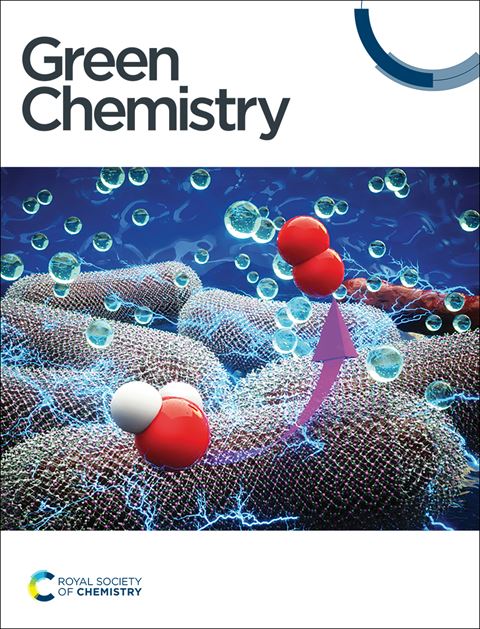Towards a scalable recycling process for ceramics in fuel-electrode-supported solid oxide cells†
IF 9.3
1区 化学
Q1 CHEMISTRY, MULTIDISCIPLINARY
引用次数: 0
Abstract
The solid oxide cell (SOC) technology relies on high-performance ceramics containing strategically valuable and critical raw materials. This study focuses on the processing of spent cell materials from fuel-electrode-supported SOCs, demonstrating the feasibility of utilizing a significant portion of the ceramic cell in a closed-loop system. More than 85% of the cell's initial mass was directly incorporated into substrate manufacturing. The air-side perovskites were initially separated using hydrochloric acid treatment, followed by mechanical reprocessing of the remaining half cells. The performance of the resulting full cells containing 50 mass% recycled material in the substrate was evaluated, achieving a current density of up to 1.14 A cm−2 at 0.7 V and 750 °C in fuel cell mode, which is comparable to that of non-recycled counterparts. Preliminary experiments for the recovery of leached metal ions from the air electrode were conducted using direct oxalate precipitation while examining pH dependence. Direct oxalate precipitation proved particularly effective in the low pH range for the recovery of a lanthanum oxalate precursor with a purity exceeding 98%. The results highlight the potential for simple and sustainable practices in SOC technology.

求助全文
约1分钟内获得全文
求助全文
来源期刊

Green Chemistry
化学-化学综合
CiteScore
16.10
自引率
7.10%
发文量
677
审稿时长
1.4 months
期刊介绍:
Green Chemistry is a journal that provides a unique forum for the publication of innovative research on the development of alternative green and sustainable technologies. The scope of Green Chemistry is based on the definition proposed by Anastas and Warner (Green Chemistry: Theory and Practice, P T Anastas and J C Warner, Oxford University Press, Oxford, 1998), which defines green chemistry as the utilisation of a set of principles that reduces or eliminates the use or generation of hazardous substances in the design, manufacture and application of chemical products. Green Chemistry aims to reduce the environmental impact of the chemical enterprise by developing a technology base that is inherently non-toxic to living things and the environment. The journal welcomes submissions on all aspects of research relating to this endeavor and publishes original and significant cutting-edge research that is likely to be of wide general appeal. For a work to be published, it must present a significant advance in green chemistry, including a comparison with existing methods and a demonstration of advantages over those methods.
 求助内容:
求助内容: 应助结果提醒方式:
应助结果提醒方式:


